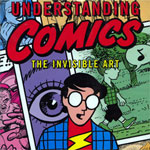This weekend at Podcamp Boston, one presenter made the point that monitoring social media won't give you all the answers, but it will give you some really good questions. Six months ago today, we started Meet Content to open a discussion about improving web content in higher education, and we've covered a lot of topics, ranging from infographics to contextual content delivery to crisis communications to editorial style. 33 blog posts and 41 On … [Read more...]
Elements of Editorial Style for the Web
Last week, while sitting at Starbucks, I overheard a guy tell his friend, "Making websites is so easy these days. You just buy a template and move text around." I joked with Georgy about asking the guy to do a Meet Content guest post on "Cut-and-Paste Content Strategy." Although most people don't describe the process as being that easy, many do have an oversimplified understanding of what is involved in creating effective … [Read more...]
Web Content Insights Through ‘Understanding Comics’
I am not a comics nerd (I don’t think my Archie obsession as a kid holds muster), though I have befriended many — and married one. So while I’ve never sniffed at comics and graphic novels as child's play, I didn’t fully realize the complexity of the form until I picked up a copy of Scott McCloud’s seminal text, Understanding Comics, in which he explains many principles of visual communication and what makes comics tick. I had heard of the book … [Read more...]
Editorial Style for Inline Links
The power of the web is its ability to connect, or link, people with ideas and information. Inline links — links within a body of text — enhance usability and comprehension by enabling readers to find valuable information, made relevant by the surrounding content. However, links are not made valuable by "click here." Without an editorial plan for using inline links appropriately, your greatest usability asset can become … [Read more...]





